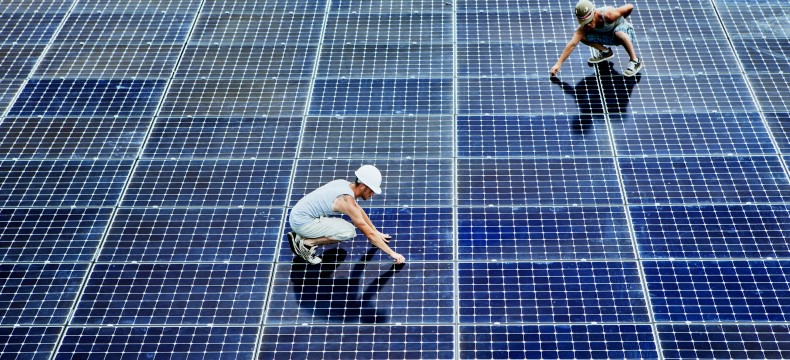
The war in Ukraine and its economic implications are a larger gamechanger for the German economy than Covid had ever been. In short, the basic pillars of the economy and success factors over the last decades have not only become weak spots but vulnerabilities which will have to undergo significant changes in the coming years. The times of cheap energy imports and a booming export sector, which benefits from globalization, are over. Instead, the German economy has to reduce its energy dependence, restructure supply chains and prepare for a new era of regionalization instead of globalization. A structural overhaul, which in the first stages will come at the costs of losing international competitiveness and economic wealth. An important silver lining, however, is green transition.
All of a sudden, the energy transition can’t happen fast enough. And with roughly half of Germany’s power generation already coming from sustainable sources, the shouldas, wouldas and couldas abound: Not too long ago, Germany was among the leading producers of solar panels and wind turbines. But, as the accusations go, politicians squandered the opportunity to catapult Germany to the forefront of the energy transition.

The process of energy transition
True as these claims may be – listening to them, it is easy to lose track of where Germany really is in the process of energy transition and where we could have been. Simply building twice as many wind turbines and solar panels over the last few decades wouldn’t have made Germany climate neutral; nor would it have made it independent of the countries that produce gas and oil.
Because switching from coal- and gas-fired power plants to wind and solar parks is not where the energy transition stops – it really is where it just begins. In Germany, for example, only around one fifth of primary energy consumed is used for power generation. A much larger part of our energy consumption comes in the form of burning fossil fuels in our cars, heating units and industrial plants – or using them as raw material for further industrial processes. Just think of the (petrochemical) industry that relies on oil and gas as base ingredients.
So, it is not only power generation that need to be switched more and more to sustainable sources. At the same time, the amount of power generated must be multiplied to enable the supply in order to allow for the electrification of these areas and their uncoupling from the consumption of fossil energy sources.
However, the challenge of the energy transition does not stop with power production – every single household and business, regardless of the sector it operates in, is faced with a significant challenge, among them a reorganization of energy supplies, increasing energy efficiency, subsequent changes to supply chains and product mixes.



